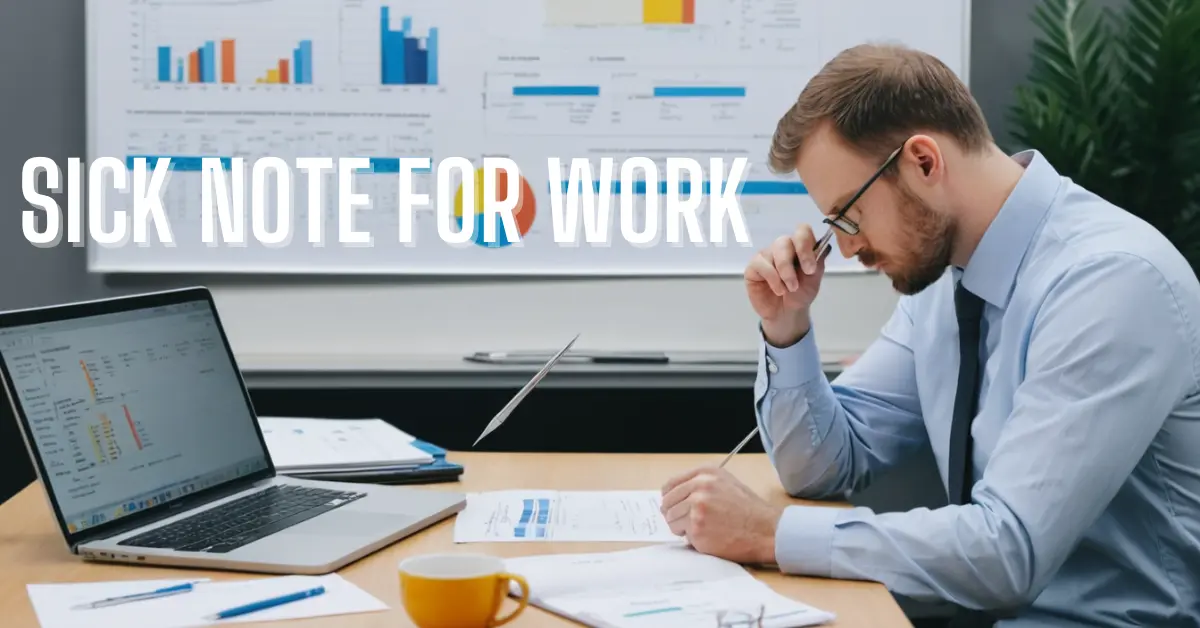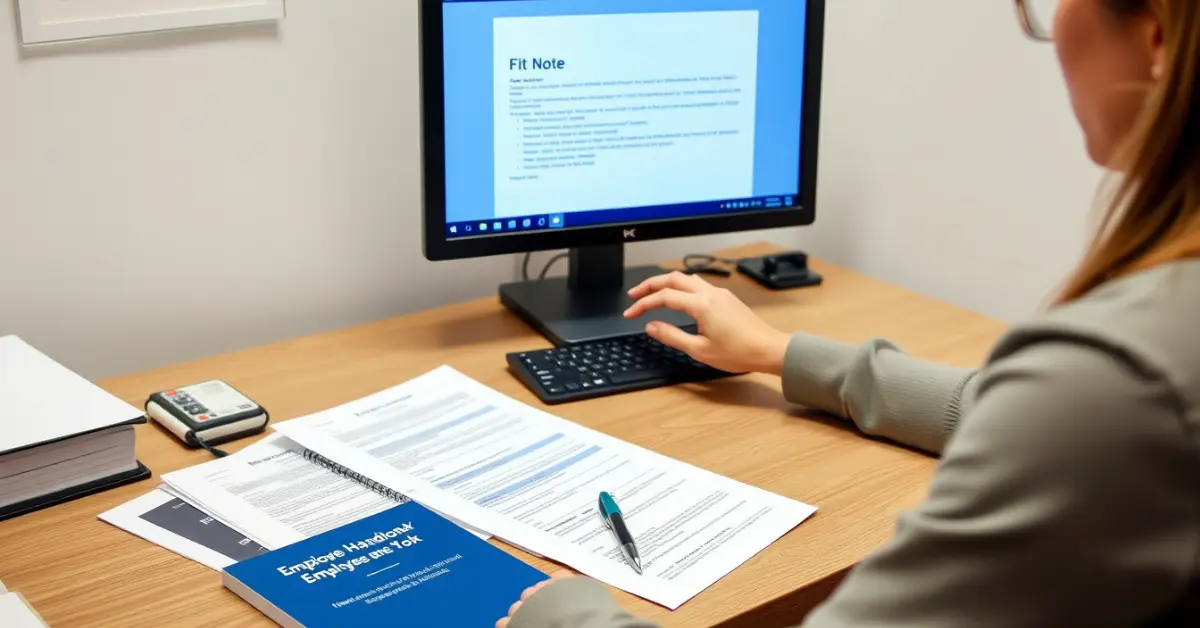Sick Note for Work
We are dedicated to providing you with convenient online Sick Notes for work without the need for a clinic visit.
Anytime Clinic offers straightforward access to Sick Notes, essential for employees needing to document their absence due to illness.
Through a quick online consultation, users can receive GP-reviewed documentation, often within the same day. This note serves as official verification of your illness, ensuring that you meet your employer's requirements for sick leave.
LET'S GET STARTED


How it Works

01
Complete online consultation
No appointment required – simply complete a medical consultation form and upload a 30 second video of your symptoms or other medical evidence. Your e-consultation will then be sent directly to a GP for review.

02
Doctor Reviews Case & Evidence
One of our FCDO and GMC registered GPs will review and validate the submitted medical evidence and health information.

03
Receive your certificate
Receive your medical certificate or doctor's note as soon as same day or next working day, straight to your inbox.
LET'S GET STARTED

We’ve all been there—waking up feeling unwell and dreading the thought of calling in sick. But what happens when your employer asks for a sick note? Exploring this process can feel daunting, especially when you’re already under the weather.
In today’s rapid work culture, knowing when and how to provide a sick note for work is crucial. It’s not just about following company policy; it’s about protecting our rights while maintaining professionalism. Let’s break it down and make it simple.
Key Takeaways
- A sick note, known as a fit note, is required for work absences lasting more than seven consecutive days, including weekends.
- Short-term absences of seven days or fewer can be covered by self-certification, with no need to visit a healthcare professional.
- Fit notes can be issued by GPs, nurses, occupational health professionals, and even pharmacists in certain cases.
- Digital sick notes, introduced in April 2022, are widely accepted as evidence and offer faster, more accessible solutions for employees.
- Employers rely on sick notes not only for absence proof but also to suggest workplace adjustments that can support recovery.
- Failing to provide a required sick note can lead to unpaid sick leave, disciplinary actions, or disputes over entitlement to statutory sick pay.
What is a Sick Note for work?
A sick note for work, often called a fit note, confirms an employee’s illness or injury. It’s issued by healthcare professionals to inform employers about someone’s ability to work.
We all know that feeling when the flu hits, and work becomes impossible. For absences longer than seven days, a sick note proves to your employer you’re not just taking a duvet day. Shorter absences don’t require it, even if weekends are part of the total days.
Doctors, nurses, or even physiotherapists can issue this document. It’s not limited to GPs—specialist clinics and hospitals can help as well. According to NHS guidelines, pharmacists in GP surgeries may also provide fit notes, ensuring accessibility.
Employers rely on these notes to decide on sick leave policies. Sometimes, they suggest adjustments like reduced hours or modified duties to ease the return-to-work process.
How to Get a Sick Note for Work
Sometimes feeling unwell means time off is unavoidable. For absences over seven days, a sick note for work is essential to keep things in line with company policies.
Steps to Obtain a Sick Note
- Start by confirming if you need one. If you’ve been off work for more than seven calendar days, including weekends, a doctor’s note for work may be required. For shorter absences, self-certification is enough.
- Reach out to a healthcare professional. This could be your GP, a hospital doctor, a nurse, a pharmacist in a GP surgery, an occupational therapist, or even a physiotherapist. They’ll need to assess whether you’re fit to work or require modifications to your duties.
- Discuss your situation during their assessment. The consultation might happen in person or over the phone. Be specific about your condition and how it impacts your ability to do your job.
- If approved, the professional will issue a fit note. They may recommend adjustments, like part-time hours or avoiding specific tasks, to help ease your transition back to work.
Can a Pharmacist Provide a Sick Note?
Yes, in some cases. Pharmacists in GP surgeries or clinics can issue fit notes if they’re involved in managing your care. They’ll follow a similar assessment process to other healthcare professionals and decide based on the information you provide.
Keep in mind, not all pharmacists are qualified to provide this service. It’s best to check with your GP surgery over the phone to confirm availability. This can save you time and ensure you get a fit note without unnecessary appointments.
What Information Should a Sick Note Include?
A sick note for work, also known as a fit note, outlines an employee’s health status during a period of absence. Its primary detail is whether the individual is “not fit for work” or “may be fit for work.” This clarity helps both employees and employers understand the level of the condition’s impact.
Details about the condition causing the absence are included in the note. For instance, it might say “back pain” or “post-surgical recovery.” This ensures employers can support appropriately while respecting confidentiality.
If marked “may be fit for work,” the note often includes recommendations from the healthcare professional. Adjustments like shorter hours or adjusted duties might appear, helping employees return earlier or work comfortably when possible.
Doctors commonly issue these notes, though nurses, occupational therapists, and even pharmacists in some cases can provide them when involved in care. It’s always best to confirm with your healthcare provider.
When is a Sick Note Required for Work?
Knowing when to provide a sick note for work avoids confusion. It also helps us meet company rules while protecting our rights.
Policies on Absences and Documentation
Employers usually have clear policies on sick leave. If we’re off for seven consecutive days or fewer, self-certification is enough. This includes weekends and non-working days. A simple form, available at most workplaces, is all that’s needed once we resume work.
For absences over seven consecutive days, we must get a fit note, often called a doctor’s note for work. This document confirms our condition and is issued by a GP, nurse, or other qualified professional. Employers cannot demand a fit note earlier unless stated in their policy.
Common Workplace Requirements for Sick Notes
Many workplaces insist on fit notes to monitor absences effectively. They help employers understand if someone is completely unfit or might work with changes, like reduced hours. Fit notes often come with recommendations tailored to recovery needs.
Some employers also request clear details about support needed at work. For example, if we’ve been signed off due to back pain, a note might suggest a more ergonomic desk setup. This ensures employers comply with legal practices while adjusting tasks sensitively.
How to Submit a Sick Note

Providing a sick note for work is a straightforward but important process. Employers rely on proper documentation to manage absences effectively and fairly.
Can You Email a Sick Note to Your Employer?
Yes, emailing a sick note is typically acceptable. Most employers prefer a scanned or clearly photographed copy sent to their HR department or designated email address. Always check the company’s policy before sending it digitally.
If emailing isn’t an option, delivering the note in person or posting it are alternatives. Retain the original copy of the note for your records even if the employer only requires an electronic version. This ensures you have proof if any issues arise later.
Best Practices for Submitting Documentation
Follow the employer’s specific instructions for submitting a sick note. Some companies may require employees to hand in the note on their first day back at work, while others accept submissions during the absence.
Attach all required details when you send the note. Ensure your name, dates of absence, and contact information are visible. If adjustments such as reduced hours are recommended, communicate these clearly to avoid misunderstandings. Keep clear records of emails or receipts confirming submission.
Can an employer override a doctor’s sick note in the UK?
A doctor’s sick note for work, often called a fit note, provides professional advice about an employee’s fitness for work. While it holds significant weight, it’s not legally binding for employers. Employers may seek additional evidence if needed.
Our government’s guidance allows employers to rely on alternative opinions from occupational health specialists or other medical professionals. When they do, the employer might favour this advice over the GP’s judgement.
Ignoring a fit note entirely can lead to risks. Employers face potential legal challenges, such as unfair dismissal claims or accusations of discrimination, without substantial grounds for rejecting it. It’s vital to tread carefully when overriding a formal medical assessment.
Digital Sick Notes
Digital sick notes are a modern alternative to the traditional paper fit note. Introduced in April 2022, they’ve become a practical solution for employees needing a doctors note for work.
Are Digital Sick Notes Accepted?
Employers in the UK now accept digital sick notes as evidence for sickness absence. Like the physical version, they confirm whether someone is “not fit for work” or “may be fit for work”. NHS guidance states these notes apply after the initial seven-day self-certification period.
These digital versions include the name of the doctor rather than their signature. They’re sent securely by email, SMS, or similar methods, making the process faster and more efficient. During the transition, both formats remain valid, but the convenience of digital has led to wider adoption.
Benefits of Digital Sick Notes
One key benefit is speed. Receiving a digital sick note for work via email or SMS eliminates delays associated with postal delivery. This is crucial when quick authorisation of sick leave is needed.
Another advantage is accessibility. Digital notes align better with remote work and situations where attending a GP in person isn’t practical. More straightforward access means more time for recovery.
Digital notes also reduce paper waste. They allow us to support employees while making environmentally conscious choices. Plus, employers can easily store these notes electronically, simplifying record-keeping.
Embracing this format aligns with our increasingly digital world. Whether you’re working from home or recovering in bed, it makes life just a bit easier.
What Happens If You Don’t Provide a Sick Note?
No one enjoys paperwork, but skipping a sick note can cause serious issues at work. Known officially as a fit note, it’s more than just a formality.
Consequences of Non-Compliance
Employers have a right to request a sick note for work when you’re absent for more than seven consecutive days, including weekends. If we don’t provide it, the absence might not be accepted as legitimate. This could raise trust concerns or worse, spark disciplinary actions.
Failing to submit a fit note might also affect our Statutory Sick Pay entitlement. Employers aren’t required to pay SSP if the necessary evidence isn’t provided. For example, without a fit note, an absence lasting two weeks could leave us without sick pay, adding financial strain to an already difficult time.
Understanding Employee Rights and Responsibilities
We’re all entitled to fair treatment at work, but this comes with responsibilities. Providing a doctors note for work after seven days of absence is part of that responsibility. It demonstrates accountability and protects our rights to sick pay and consideration.
While we might feel hesitant about asking for a sick note, it’s a straightforward process. By handling it promptly and professionally, we keep workplace relationships smooth and avoid unnecessary complications. The balance between our rights and obligations keeps everyone on the same page, ensuring a supportive environment.
How Long Can You Be Absent Without a Sick Note?
We often wonder how long we can miss work without needing a formal sick note for work. The rules vary based on the duration of your absence and employer expectations.
Employer Expectations for Short Term and Long Term Absences
For short term absences—seven days or fewer—self-certification is enough. This covers weekends and non-working days as well. Employers usually ask for written confirmation, which could be a form, email, or an old-fashioned letter.
If you’re off for more than seven consecutive days, a doctor’s note for work is required. This shows your employer that your illness or injury is genuine. Some may even use the note to make adjustments, like reduced hours, ensuring you’re comfortable.
Legal Requirements and Thresholds
UK law permits employees to self-certify for up to seven days of sickness. No need for a GP visit for these shorter absences. Self-certification can be done using a Statutory Sick Pay Form (SC2) or a simple written statement.
Beyond seven days, legal guidelines require a sick note authorised by a healthcare professional. The note, often called a fit note, confirms whether you’re unfit for work or need adjustments. Employers can’t demand it earlier without specific arrangements. Regulatory compliance ensures both sides follow fair practices.
Protecting Your Rights as an Employee
Understanding employment rights is essential when managing sick leave. Employers are legally obliged to respect our wellbeing and comply with UK regulations.
Understanding Workplace Policies
Most workplaces outline their sick leave processes in an employee handbook. This document typically explains when to provide a sick note for work and outlines procedures for reporting absences. Knowing the company’s rules empowers us to handle sickness incidents confidently.
Policies may reference when a self-certification or a doctors note for work is required. For absences up to seven days, self-certification suffices. For longer periods, a fit note from a healthcare professional becomes necessary. Employers legally can’t demand sick notes earlier than their policy specifies, keeping things fair.
Steps to Take if Your Sick Note is Disputed
Occasionally, an employer might question the validity of a sick note. In such cases, it’s essential to remain calm and composed while addressing their concerns. Start by requesting a clear explanation of the issue. Employers must justify their dispute to maintain transparency.
If trust breaks down, we can seek advice from organisations like ACAS or Citizens Advice. They offer guidance specific to UK workers and can mediate if needed. According to ACAS, employers disregarding a fit note risk legal trouble if their actions lead to unfair dismissal or discrimination claims.
Conclusion
Exploring the process of providing a sick note doesn’t have to be stressful. By understanding when a fit note is required, how to obtain one, and the best ways to submit it, we can handle sick leave with confidence and professionalism.
It’s essential to stay informed about our rights and responsibilities while ensuring we follow workplace policies. This not only protects us but also fosters a supportive and transparent relationship with our employers.
Whether it’s a traditional or digital sick note, taking the right steps ensures a smoother process and helps maintain a positive work environment.

